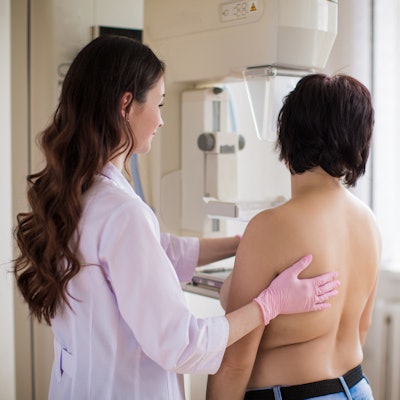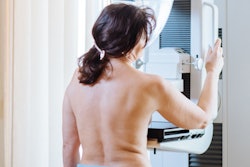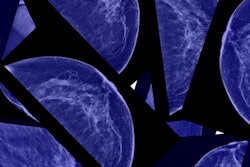
Women who control their own breast compression during screening mammography end up having mammograms that are just as good as those in which a technologist controls the compression -- and the women report less pain, according to a study published online February 4 in JAMA Internal Medicine.
For some women, mammograms are uncomfortable, or even painful, due to the compression of breast tissue required to acquire an accurate image. Fear of this discomfort can prevent women from returning for regular screening, wrote a team led by Dr. Philippe Henrot of the Institut de Cancérologie de Lorraine - Alexis Vautrin in Vandoeuvre-lès-Nancy, France.
 Dr. Philippe Henrot from the Institut de Cancérologie de Lorraine - Alexis Vautrin.
Dr. Philippe Henrot from the Institut de Cancérologie de Lorraine - Alexis Vautrin."Many women dread undergoing mammography, and some may not attend or reattend breast cancer screening because of the discomfort or pain induced by breast compression," the researchers wrote. "[One study] found that pain was reported by women as the cause of non-reattendance in 25% to 46% of cases."
Although compression is critical for ensuring high-quality screening mammograms, there are no guidelines that describe an optimal technique, Henrot's team noted. Methods proposed to limit patient discomfort during mammography include using devices that analyze the ratio of force variation over thickness variation and stop compression when a particular threshold is reached; analyzing the ratio of compression force over the contact area; or improving compression paddle design.
But the easiest solution could be to give women control of compression during the exam, according to Henrot and colleagues. Some studies have shown that when women self-compress, they report less pain and greater overall satisfaction with the exam, and image quality does not appear to be compromised.
The researchers compared the performance of self-compression versus radiographer-controlled compression among 548 women who underwent mammography between May 2013 and October 2015 at six cancer care centers in France. Of the total cohort, 275 were randomized to the self-compression arm of the study and 273 to the radiographer-controlled compression arm. Four views were acquired: right craniocaudal (CC), left CC, right mediolateral oblique (MLO), and left MLO.
After the views were completed, each woman was asked to rate her pain level. Radiologist readers blinded to whether the exam had been performed in the self-compression group or the radiographer-controlled compression group evaluated the image quality of the four views. Compression force was measured in Newtons (N), while pain was measured on a 10-point scale, with zero indicating no pain.
Compression force was higher in the self-compression group than in the standard compression group, and reports of pain were lower, Henrot and colleagues found. There was no statistically significant difference in the image quality scores of the two groups.
| Self-compression vs. standard compression for mammography | ||
| Measure | Self-compression | Radiographer-controlled compression |
| Breast thickness, mean | 52 mm | 52.2 mm |
| Compression force | ||
| Right CC | 109.82 N | 97.82 N |
| Left CC | 105.77 N | 97.03 N |
| Right MLO | 115.96 N | 107.84 N |
| Left MLO | 119.23 N | 109.13 N |
| Self-reported pain | ||
| Scale of 0-10 | 2 | 3 |
The study results confirm other research demonstrating that reported pain levels are lower and the ability to tolerate pain is higher when an uncomfortable stimulus is self-inflicted instead of applied by another person, Henrot and colleagues noted.
"Within a mammography setting, the explanation for this phenomenon could be that the woman is aware that she can stop the compression at any time, resulting in a greater ability to tolerate the ongoing crushing phase," the group wrote.
Self-compression for mammography achieves a higher compression force without increased pain or compromised image quality, which suggests that it's a promising technique for breast cancer screening that could improve women's compliance, the researchers concluded.
"Self-compression mammography may be an effective screening approach for women who want to take an active role in their breast examination," they wrote.




















